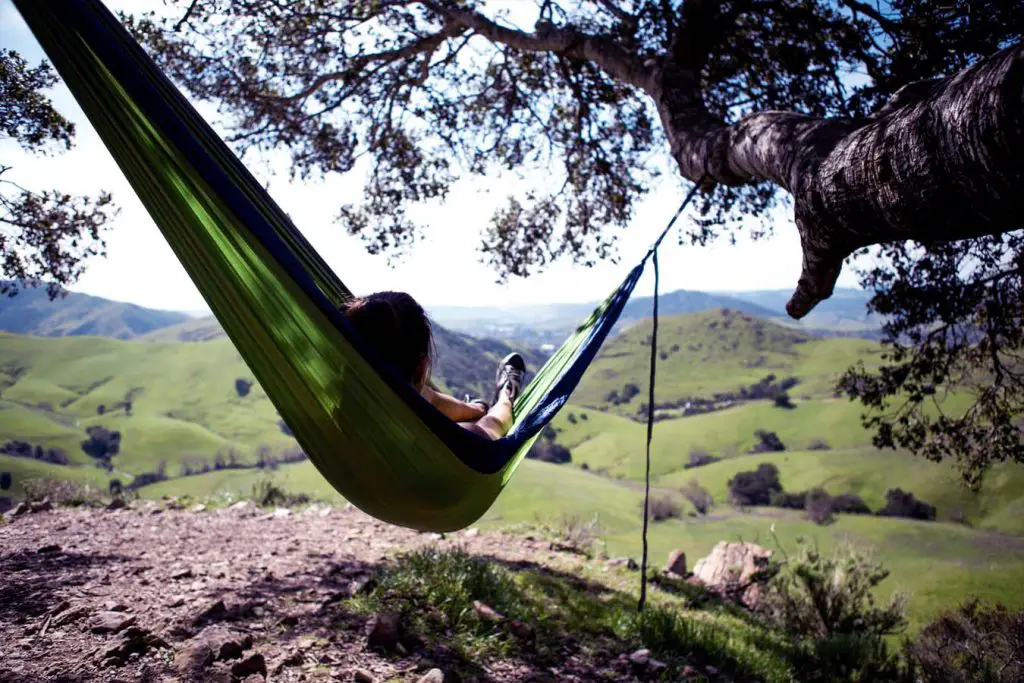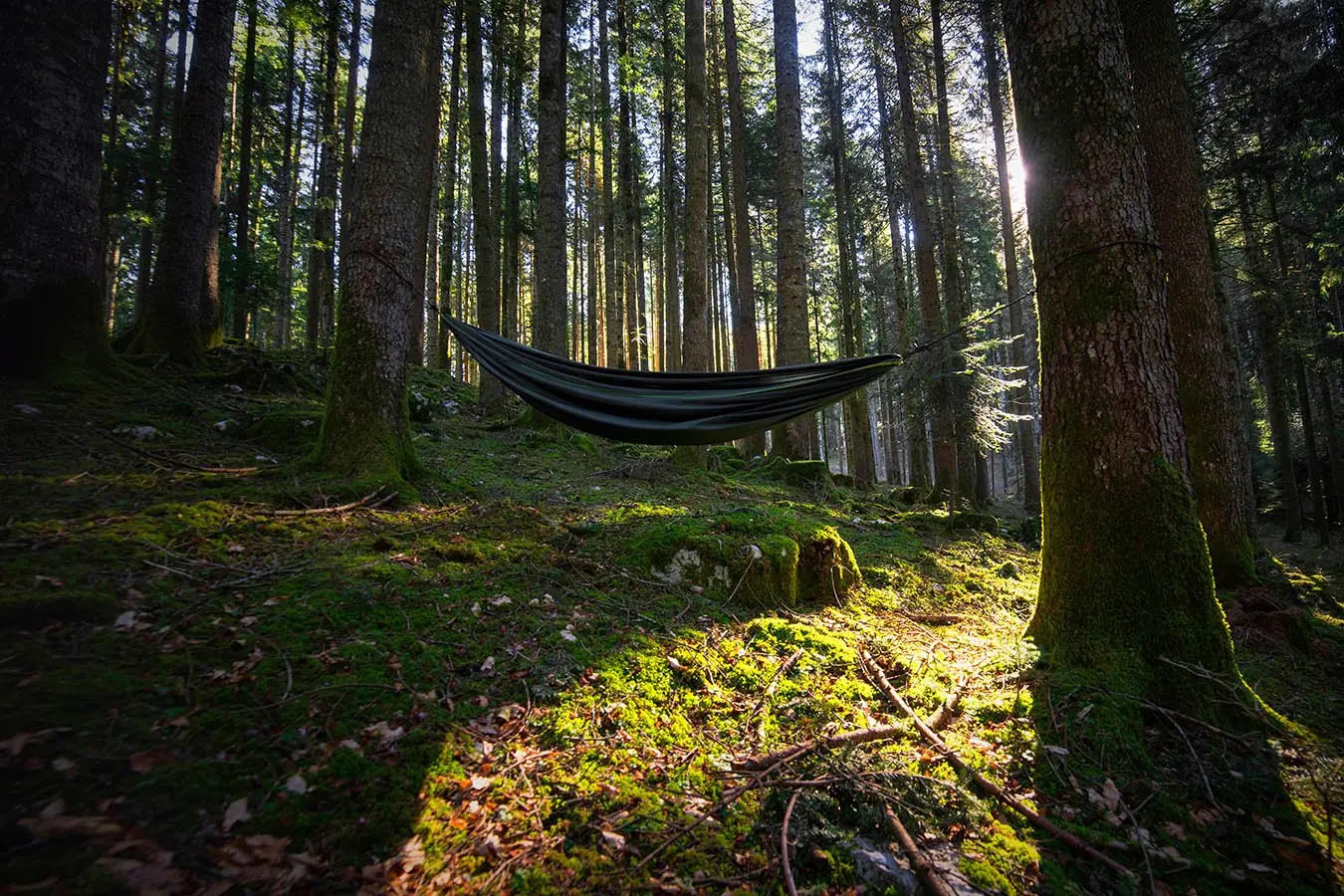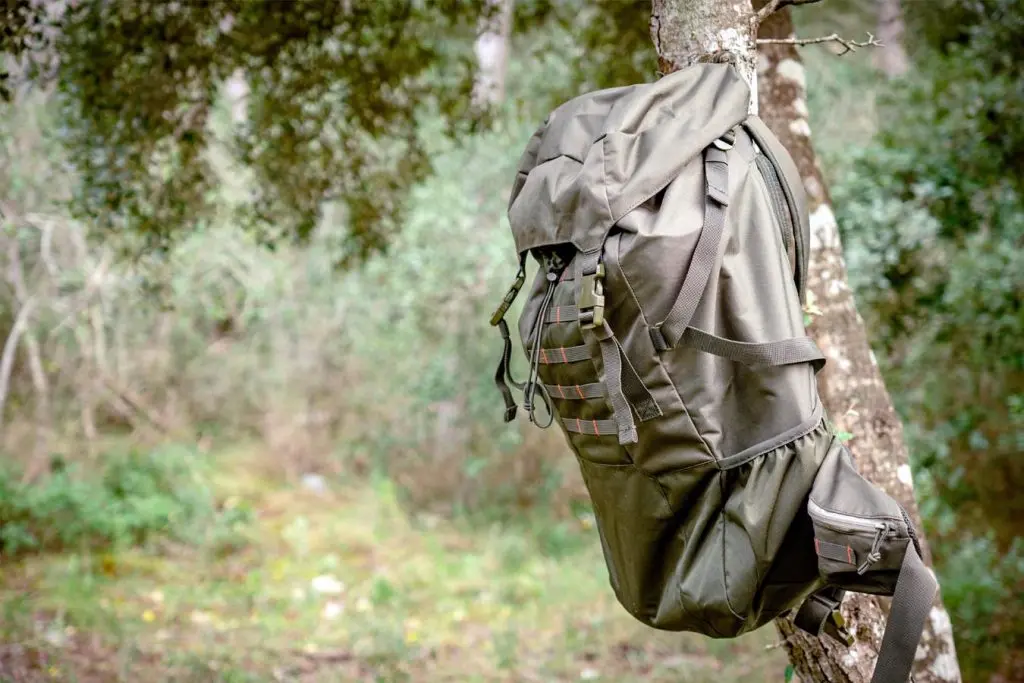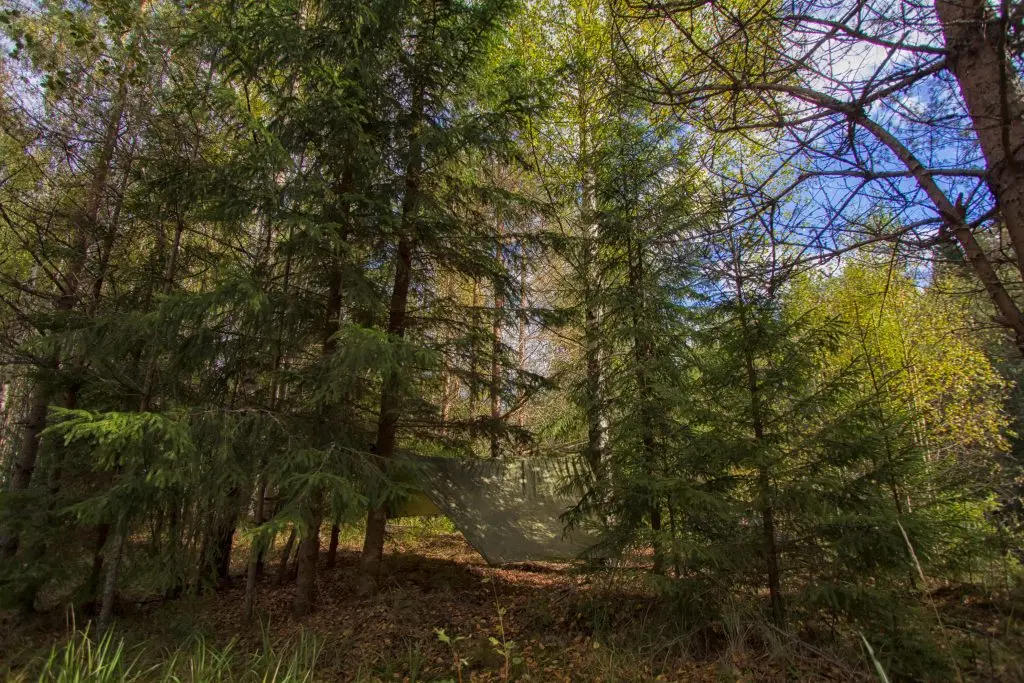Hanging a hammock is both fun and practical. It offers a place to sleep while out in nature and away from the comfort of the bed at home. But not all hammocks are made the same. Their straps are believed to harm trees but with the right technique, outdoor lovers can hang a hammock safely, with no impact on trees.
How can a hammock hurt a tree?
A hammock can potentially hurt a tree in multiple ways, for example; high user weight can damage thin trees, and hanging a hammock in the wrong place on a tree can damage all types. But the biggest reason for concern is when using a tying cord or rope.
Cords can severally cause wear to tree bark, which is the biggest reason hammock brands have started producing anchoring straps. Considerably wider than cords, straps are friendlier to bark and they can be one of the must-haves of any new hammock.
- Hammocks hurt trees by wearing bark away
- Heavy hammocks hurt small trees (usually under 6 inches in diameter)
The bark is the tree’s skin. It’s what protects it from the elements and real dangers such as insects. It’s also known that bark covers the tree’s cambium, which dries out when the bark is damaged. While small bark damages can be repaired, such methods aren’t reliable every time. As a result, it’s best to protect the tree properly in the first place.
The widest hammock straps on the market are always the best. The straps always need to be flat, so not to cut into bark. Today, hammock straps are made with a width between 1 and 1.5 inches from nylon to minimize their impact. These straps are still secure and tested for user weight capacity.
How to set up a hammock safely
Safely hanging the hammock both for the trees and for the sleeper is the right way to go. Selecting the right trees, straps, and staying away from dead trees is key here.
- Choose the safe trees for hammocks
Not all trees are the same. In some areas, using hammocks is prohibited. But in areas where there’s no hammocking regulation, it’s up to the user to protect the trees.
The first protective measure is to choose a safe tree for the hammock. Trees that are under 6 inches in diameter should not hold any hammocks. In general, not all trees are the same even when thicker. Maple, oak, and palm trees are among the strongest which can withstand the weight of a hammock.
- Use tree saver straps
Wide straps are also marketed as tree saver straps. As their name suggests, they’re primarily designed to limit the possible negative impact of the hammock on the tree.
These straps go around the tree as they minimize grinding. Made from soft webbing, these straps may also be purchased separately. Those who already own a hammock with cord straps can make the upgrade for a very low price.
As all alternatives, tree saver straps also come with the tested weight capacity. Users should know exactly the weight these straps can hold, especially when replacing old cord-style straps with tree-friendly wide straps.
- Stay away from dead trees
Steering in the other direction and looking for dead trees to hang the hammock off is not the wisest either. Some campers might be tempted to hang the hammock off dead trees in the quest to minimize environmental impact.
But these trees might give under the weight of the sleeper. Even dead branches can fall onto your hammock and it’s best to move further to thick healthy trees to hang the hammock safely.
- Avoid paracord
Some campers treat paracord as the most versatile solution for hanging hammocks and dealing with other camping needs. In theory, paracord is guaranteed up to 500lbs, but it lacks the overall stability not to end up sleeping on the ground in the evening. Since it’s rather elastic, paracord is not the best solution for hanging hammocks.
From a bark perspective, paracord is not too safe either. Its smaller rounded surface cuts into bark which is what prevents it from being an environmentally-friendly solution.

Maintaining tree health while hammock camping
Maintaining tree health is crucial as tress are responsible for oxygenation. But there’s a lot there isn’t visible in tree health to the naked eye.
Protect the outer bark
The outer bark which is visible to campers can be damaged easily. All damages to the bark are visible but many can be deeper damaged which aren’t visible to the camper.
A tree might be suffering differently even if it doesn’t seem like the hammock’s cord has made too much damage.
Protect the inner bark
Inner bark or the inner tree is where it’s ‘blood’ system is and it can suffer when the outer bark is damaged. This inner layer is the one transporting nutrients such as sugars resulting from photosynthesis.
The cord of the hammock can stop this process, eventually killing the tree.
Navigate hammock cords when there’s no alternative
Those who have no alternative or campers caught in the wilderness with their hammocks with cords might still find options to protect the trees, even if they’re only temporary.
Use sticks under the cord
One of the best methods to reduce the pressure of the cord on the bark and the tree is using sticks or other objects placed around the tree trunk. Inserted underneath the cord, the pieces of wood reduce the pressure of the cord on the tree.
The good part about this method is that it can be put into practice anywhere. The main idea is to protect the trees, especially if they’re located on popular trails.
A single hammock might not do too much harm but multiple hammocks and users hanging hammocks on the same tree is problematic in the long term.
How not to leave any camping trace
Some cities have no-hammock policies as a result of the damage made to the trees. Accidents can also happen when hammocks are left lying around in busy parks.
Out in the wilderness, there are no street cleaners to deal with any straps or hammocks forgotten on the trees. Here’s how to be more environmentally-friendly and protect trees while still enjoying swaying sleep in a hammock.
Plan the camping route ahead
One of the best methods of reducing harm made to trees is to simply try and plan the camping route. Campers might already know where the thickest hammocking trees are on certain trails.
Planning comes with benefits such as leaving early to arrive at a known safe hammocking place before sunset.
Only choose the best trees
When planning isn’t possible, campers can simply choose the right healthy trees to hang the hammock on. As stated before, the tress should have at least 6 inches in diameter. Some campers only consider the trees which can’t be hugged with the hands meeting together just to be on the safe side.
It’s also worth looking up when it comes to establishing the health of the tree. This avoids camping under dead branches or branches which are about to fall. It’s also wise to stay away from bird’s nests which are also high above the hammock.
Buy extra tree saver straps
Tree saver straps are affordable. But not many are aware they need them until they head out to the first camping trip. Those going out with friends might also have the surprise to see others are using cords to hang their hammocks. This is where having a few extra tree saver straps helps the entire camping group.
Tree saver straps with reinforced loops can be the best when it comes to dealing with high user weight and keeping bark unaltered. It’s not unusual to find affordable tree saver straps with high 30,000lbs weight capacity.

Consider an established campsite
Considering an established campsite is one of the best methods of staying clear of potential environmental damages. Established campsites have marked hammock pitching areas and they can be a good alternative to new campers who might not know where to safely camp.
However, campers should be cautious about established campsites as well. It’s popular camp destinations that attract most people with cord-style straps used on the same trees.
Take a look a hammock stands
Another method of limiting harming trees is to buy a hammock stand. There are thousands of hammock stands to choose from and some of them are mobile. This means campers can rely on the hammock stands entirely without even requiring trees.
This method can be one of the versatile solutions to consider hammock sleeping even back at home. Many campers consider their hammock stands for pitching a hammock in the backyard. However, even hammock stands have their drawbacks.
First of all, they can be large for several hiking backpacks to carry in. Then, they add weight to the camping setup, which defeats the advantage of a hammock over a tent. A regular hammock stand weighs around 30 pounds and it adds to the overall weight of the trekking gear.
Only use woods and branches off the ground
Campers who want to use pieces of wood and branches to stop the cord from cutting into the bark consider wood they find on the ground. To reduce the environmental impact of camping and leave no trace out in nature, all campers should only use the wood on the ground.
Cutting branches down is only going to negatively impact tree health.
Don’t make a campfire next to trees
Another problem with protecting the health of the trees is with campfires. Even when using tree saver straps, campers can still damage trees when they make a fire close to them or under them.
The extra heat can dry and even burn bark, branches, and leaves, potentially killing the tree.
Stay away from the riparian zone
The riparian zone is considered a protected zone and it should not be the place to pitch a hammock. The zone refers to the immediate water vicinity of trees and plants and users should aim to camp further away from water sources to protect the ecosystem these areas are known for.
Consider plant safety as well
It’s not just about protecting trees and ensuring they’re out of harms’ way. Plants can suffer as well. When considering a hammocking area, it’s crucial to find the places where plants can’t be damaged either.
In the obsessive quest to find large trees, campers can end up camping above plants, which is also not the best idea when it comes to protecting wildlife.
Pack the hammock to allow natural tree pollination
Tree pollination is another issue not many campers consider. When national parks issue a plea to pack up camping gear, it also aims to protect tree pollination. Leaving a hammock out in the wild can interfere with natural tree pollination, which is limited to a few days per year.
- Oaktree pollination takes place between February and late May
- Maple tree pollination in North America occurs in early May
Tree pollination is highly reliant on wind and not encountering too many obstacles. The process can be hindered if too many campers leave their inexpensive hammocks out in nature. As a result, it’s best to pack up all camping gear once leaving the camp.
Final considerations
Hammock straps certainly harms trees. But researching the best hammock equipment can limit or even eliminate the harm these trees have to face. Staying away from cords and replacing them with wide straps is the first step towards a reduced impact on trees.
Thin cords can cut into the bark and expose the inner tree to insects and fungi. As a result, campers should also warn others of their potential dangers. While many hammocks are now made with wide tree straps, some aren’t.
However, even tree saver straps can’t do much when the hammock is pitched on thin trees. Ensuring the hammock is only pitched on trees with a diameter of 6in at a minimum is considered the best approach. Many of these issues can be solved simply by planning the outing.
Related guides
How To Find The Best Hammock Rain Fly
Best Hammock Sleeping Pads For Summer And Winter
Finding The Best Hammock Mosquito & Bug Net
Best Hammock with a Bug and Mosquito Net




